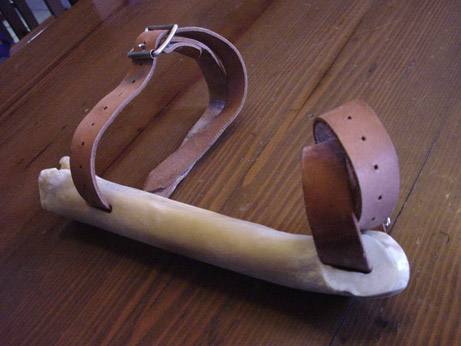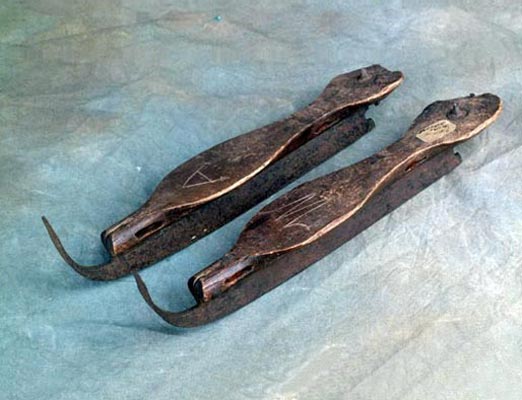The Physics of Ice Skating
Home History Skate Design Forces and Motion Sources
Early Ice Skates
Today ice skates are used mostly for recreational uses, but they were originally invented as a form of transportation. The efficiency of ice skates has dramatically improved over their history, which is made possible by the invention of new materials and by applying the knowledge of physics.
Ice skating started about 3000 years ago in Northern Europe using ice skates made from horse or cow bones (Formenti & Minetti, 2002). These skates looked much like those pictured below.
Each skate was attached to the foot by straps. The slippery bone in contact with the ice allowed the user to slide with very little friction. These ice skates were used differently than those used today. They did not have a sharp edge like modern skates and therefore did not restrict side-to-side motion. The user had to use a stick and push off the ground for forward motion.
In the 13th and 14th century, metal replaced the bone skates. These early metal blades had a higher coefficient of friction with the ice than the bone did. For the early metal skates the kinetic coefficient of friction was around 0.0147 whereas the bone only had coefficient of around 0.0103 (Formenti & Minetti, 2002). This increases the force due to friction by about 40%. Overall the metal blades were easier to use because they allowed for the legs to provide motion instead of the arms.
By the 1800's the skates were made to be thinner and a had a coefficient of friction lower than that of the bone skate. Below are pictures showing the designs of early metal skates. The skates shown on left are from the 1200's and the skates pictured at right were made in the 1800's. These designs still needed to be attached to the user's boot.
In the 1900's, skates started to be created with an attached boot. This is similar to how skates are made in the 2000's. Skates in 2007 had a kinetic coefficient of friction of 0.0058. This is is about half of the original bone skates.



